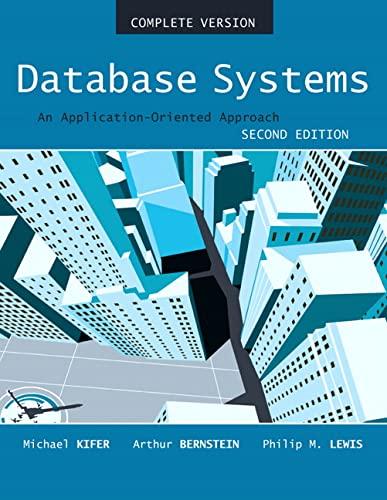Question
* @brief This is the header file for the PCB class, a process control block. */ //You must complete the all parts marked as TODO.
* @brief This is the header file for the PCB class, a process control block.
*/
//You must complete the all parts marked as "TODO". Delete "TODO" after you are done.
// Remember to addPCB sufficient comments to your code
#pragma once
#include
using namespace std;
// enum class of process state
// A process (PCB) in ready queue should be in READY state
enum class ProcState {NEW, READY, RUNNING, WAITING, TERMINATED};
/**
* @brief A process control block (PCB) Process control block(PCB) is a data structure representing a process in the system.
A process should have at least an ID and a state(i.e.NEW, READY, RUNNING, WAITING or TERMINATED).
It may also have other attributes, such as scheduling information (e.g. priority)
*
*/
class PCB {
public:
// The unique process ID
unsigned int id;
// The priority of a process valued between 1-50. Larger number represents higher priority
unsigned int priority;
// The current state of the process.
// A process in the ReadyQueue should be in READY state
ProcState state;
/**
* @brief Construct a new PCB object
* @param id: each process has a unique ID
* @param priority: the priority of the process in the range 1-50. Larger number represents higher priority
* @param state the state of the process.
*/
PCB(unsigned int id = 0, unsigned int priority = 1, ProcState state = ProcState::NEW) {
this->id = id;
this->priority = priority;
this->state = state;
}
/**
* @brief Destroy the PCB object.
*
*/
~PCB() {}
/**
* @brief Get the ID of the PCB.
*
* @return unsigned int: the ID of the PCB
*/
unsigned int getID() {
return id;
}
/**
* @brief Get the priority of the PCB.
*
* @return unsigned int: the priority of the PCB
*/
unsigned int getPriority() {
return priority;
}
/**
* @brief Get the state of the PCB.
*
* @return ProcState: the state of the PCB
*/
ProcState getState() {
return state;
}
/**
* @brief Change the state of the PCB.
* @param state
*/
void setState(ProcState state) {
state{NEW,TERMINATED,RUNNING,READY};
}
/**
* @brief Change the priority of the PCB.
* @param priority
*/
void setPriority(unsigned int priority) {
// TODO: add your code here
}
/**
* @brief Print the PCB.
*
*/
void display() const {
cout << "ID: " << id;
cout << ", Priority: " << priority;
cout << ", State: " ;
switch(state) {
case ProcState::NEW:
cout << "NEW";
break;
case ProcState::READY:
cout << "READY";
break;
case ProcState::RUNNING:
cout << "RUNNING";
break;
case ProcState::WAITING:
cout << "WAITING";
break;
case ProcState::TERMINATED:
cout << "TERMINATED";
break;
}
cout << endl;
}
};
Step by Step Solution
There are 3 Steps involved in it
Step: 1

Get Instant Access to Expert-Tailored Solutions
See step-by-step solutions with expert insights and AI powered tools for academic success
Step: 2

Step: 3

Ace Your Homework with AI
Get the answers you need in no time with our AI-driven, step-by-step assistance
Get Started


